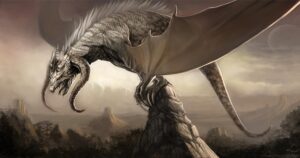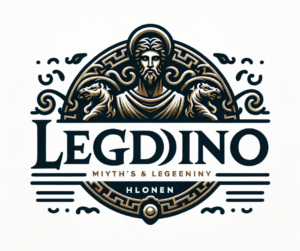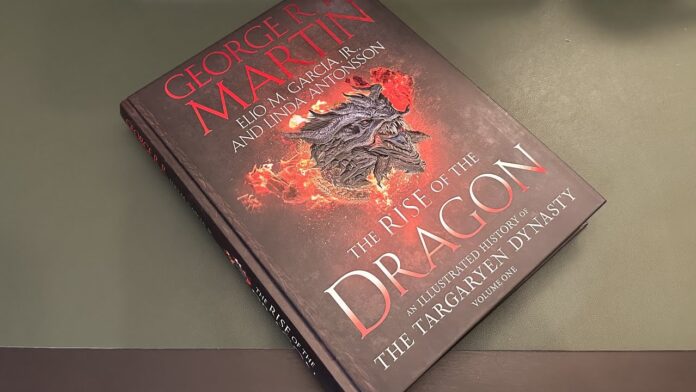
Dragons have been a part of human mythology and storytelling for thousands of years, captivating the imagination with their powerful presence and enigmatic nature. In 2024, the fascination with dragons is experiencing a resurgence, as these mythical creatures continue to inspire a wide range of cultural expressions, from literature and film to digital art and games. This article delves into the rich mythology of dragons, their significance across different cultures, and their lasting impact on modern society.
1. The Origins of Dragon Mythology
The myth of the dragon spans across various cultures, each attributing unique characteristics and symbolism to these legendary creatures. In Western mythology, dragons are often depicted as fearsome, fire-breathing beasts, symbolizing chaos and destruction. Conversely, in Eastern cultures, particularly in China, dragons are revered as benevolent creatures that symbolize power, strength, and good fortune.
Dragons are often associated with natural elements such as water, fire, and earth, reflecting humanity’s attempts to understand and personify the forces of nature. In ancient Mesopotamia, dragons were depicted as protective spirits guarding the gates of temples. In Hindu mythology, dragons, known as “Nagas,” are semi-divine beings associated with water bodies and rainfall, embodying both fertility and danger.
2. Cultural Significance of Dragons in Different Societies
Dragons hold significant cultural importance across various societies. In Chinese culture, the dragon is one of the twelve zodiac animals and is believed to bring prosperity and good fortune. Chinese dragons are typically depicted as long, serpentine creatures with no wings, unlike their Western counterparts. They are celebrated during festivals, such as the famous Dragon Boat Festival, where communities come together to race dragon-shaped boats in honor of the dragon’s symbolic power over water.
In European folklore, dragons are often portrayed as malevolent creatures hoarding treasures and guarding castles. The image of the dragon-slaying knight has become a staple of medieval legends, symbolizing the triumph of good over evil. The story of Saint George and the Dragon, where a knight saves a princess from a dragon, is a prime example of this motif and has been adapted into various forms of art and literature.
In Japan, dragons are depicted as water deities and are often associated with rivers and rainfall. The Japanese dragon, or “Ryu,” shares similarities with its Chinese counterpart but is often depicted with three claws instead of four. Dragons in Japan are considered wise and are respected as protectors of the people.
3. Dragons in Modern Media and Pop Culture
In 2024, dragons continue to play a prominent role in modern media and pop culture. From blockbuster movies and television series to video games and graphic novels, dragons are a source of endless fascination. The success of fantasy franchises like “Game of Thrones” and “The Witcher” has brought dragons back into the limelight, showcasing their awe-inspiring presence and the dramatic tension they add to storytelling.
Video games such as “The Elder Scrolls V: Skyrim” and “Dragon Age” allow players to engage directly with dragons, either as allies or formidable adversaries, highlighting the enduring appeal of these mythical creatures. Digital artists and creators are also finding new ways to reimagine dragons, combining traditional mythological elements with futuristic designs to create visually stunning representations that resonate with contemporary audiences.
4. Symbolism of Dragons in Contemporary Contexts
Beyond their mythical roots, dragons have taken on new meanings in contemporary contexts. In modern literature and film, dragons are often used to explore complex themes such as power, greed, and transformation. They can symbolize both the inner demons one must conquer and the untapped potential within every individual. The dragon’s ability to change form and wield immense power makes it a versatile symbol in storytelling, embodying both the darkness and the light of human nature.
In some cultures, dragons have become symbols of national identity and pride. For example, the Welsh dragon on the flag of Wales represents the country’s resilience and historical legacy. In Bhutan, the “Druk” (Thunder Dragon) is a national symbol that represents the spiritual and cultural values of the Bhutanese people.
5. The Revival of Dragon Myths in Environmental Narratives
In recent years, dragons have also been revived in environmental narratives, symbolizing the urgent need to protect our natural world. As guardians of nature, dragons are depicted as protectors of forests, rivers, and mountains, reflecting humanity’s growing awareness of environmental conservation. This new interpretation aligns with ancient beliefs that saw dragons as custodians of natural elements, reinforcing their timeless relevance.
This shift in perspective is evident in literature and media that highlight the relationship between humans and nature. In some stories, dragons are portrayed as beings that retaliate against environmental destruction, serving as a reminder of the consequences of ecological negligence. This reimagining of dragons emphasizes the importance of harmony with nature, urging a more sustainable approach to living on Earth.
6. Dragons as a Source of Inspiration and Creativity
Dragons have always been a source of inspiration and creativity for artists, writers, and storytellers. In 2024, the dragon continues to inspire new forms of artistic expression, from digital art and animation to fashion and design. Artists are experimenting with different cultural interpretations of dragons, blending traditional elements with modern aesthetics to create unique, culturally relevant representations.
The rise of social media and online communities has also enabled dragon enthusiasts to share their passion and creativity with a global audience. Online platforms such as DeviantArt, Instagram, and TikTok are filled with fan art, animations, and stories that celebrate the diverse representations of dragons, showcasing their universal appeal.
7. The Future of Dragon Legends
As we look to the future, the legend of the dragon shows no signs of fading. The continued popularity of dragons in various forms of media and their enduring presence in cultural traditions around the world demonstrate their timeless appeal. As symbols of power, wisdom, and mystery, dragons will likely continue to captivate the imagination for generations to come.
The rise of dragon legends in 2024 reflects a deep-seated fascination with these mythical creatures and their ability to transcend cultural boundaries. Whether as symbols of nature’s raw power or as guardians of ancient wisdom, dragons remind us of the limitless potential of human imagination and the enduring power of myth.
Conclusion
Dragons have been a part of human culture and mythology for millennia, symbolizing a wide range of meanings from chaos and destruction to wisdom and protection. In 2024, the resurgence of dragon legends across various forms of media and cultural expressions highlights their timeless appeal and significance. As we continue to explore and reimagine these mythical creatures, dragons will undoubtedly remain a powerful symbol in both ancient traditions and modern narratives, inspiring creativity and imagination for years to come.


















